 Sat./Sun. Nov. 8 & 9
Sat./Sun. Nov. 8 & 9
9:30am to 3:00 pm
Not to be Missed!
Find artisan jewelry, stylish shoes, clothing and accessories, local artisan and other special art and craft pieces, antiques, linens, kitchen stuff, CDs, books.
You never know what you’ll discover from Eve’s personal collection! Eve has spent her life as a treasure hunter, seeking beauty, quality, authenticity and value, in every realm, from experiences to plants to art to earrings! Bring your friends!
CASH ONLY![Read More]

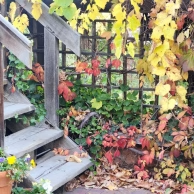 I confess. I am definitely a plant hoarder. Every year, I amass a formidable collection of plant starts, and then spend evenings through the season walking around my garden, little pots in hand, trying to find a few square inches where I can fit them in. Then I make tags and put them in the spots I’ve found (or created by taking some other plant out). If the critters don’t pull them out, most of those tags wait months for the magical moment when the weather is mild enough for me to plant them – October at last!
I confess. I am definitely a plant hoarder. Every year, I amass a formidable collection of plant starts, and then spend evenings through the season walking around my garden, little pots in hand, trying to find a few square inches where I can fit them in. Then I make tags and put them in the spots I’ve found (or created by taking some other plant out). If the critters don’t pull them out, most of those tags wait months for the magical moment when the weather is mild enough for me to plant them – October at last!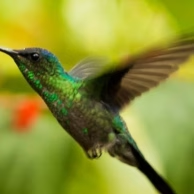 All summer and fall, Mikl and I have been collecting seeds from our own gardens and from wildlands where we have collecting permits, and at this point, most of that collecting is done. After spending last Sunday cataloging our seed collections, I’m delighted to report that so far, we have collected at least 85 species, most of them local natives. We can’t sell you the seeds we collect (the USDA won’t allow it), and besides, we need them for growing our plants for you. But we have excellent wildflower seed mixes from BBB Seeds in Boulder.
All summer and fall, Mikl and I have been collecting seeds from our own gardens and from wildlands where we have collecting permits, and at this point, most of that collecting is done. After spending last Sunday cataloging our seed collections, I’m delighted to report that so far, we have collected at least 85 species, most of them local natives. We can’t sell you the seeds we collect (the USDA won’t allow it), and besides, we need them for growing our plants for you. But we have excellent wildflower seed mixes from BBB Seeds in Boulder. I’ve been shopping at my local Farmers Market on Saturday mornings, and have been really impressed with some of the gorgeous, large vegetables some of my favorite farms have grown this year. Most notable were the huge fennel bulbs and the stunning, large, firm heads of purple radicchio. But the garlic bulbs I found at the market have been, to be blunt, puny. And most are sold without variety names. Some were not properly cured. Small bulbs with small cloves are just fine for use in the kitchen for the next 3 to 5 months, but they are not suitable for planting.
I’ve been shopping at my local Farmers Market on Saturday mornings, and have been really impressed with some of the gorgeous, large vegetables some of my favorite farms have grown this year. Most notable were the huge fennel bulbs and the stunning, large, firm heads of purple radicchio. But the garlic bulbs I found at the market have been, to be blunt, puny. And most are sold without variety names. Some were not properly cured. Small bulbs with small cloves are just fine for use in the kitchen for the next 3 to 5 months, but they are not suitable for planting. 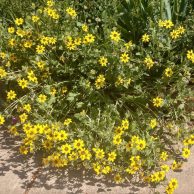



 Our Fall Sale Keeps Getting Better!
Our Fall Sale Keeps Getting Better!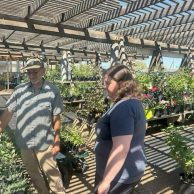 Our Fall Sale Keeps Getting Better!
Our Fall Sale Keeps Getting Better! It’s the First Week of our 2025 Fall Sale! Start Saving Saturday!
It’s the First Week of our 2025 Fall Sale! Start Saving Saturday! Dear Friends and Fellow Gardeners,
Dear Friends and Fellow Gardeners, By Eve Reshetnik Brawner
By Eve Reshetnik Brawner A cornucopia of stunning, hardy bulbs will be arriving in August and early September at Harlequin’s, so get ready! Now is a great time to peruse our list (at the link below) and to look at your garden to identify areas where you can add fall-planted bulbs for (mostly) spring blooms (a few special Crocus and Colchicum bloom later in the fall!). Consider the gentle drama of a drift of mixed daffodils (Narcissus) that bloom from early to late spring
A cornucopia of stunning, hardy bulbs will be arriving in August and early September at Harlequin’s, so get ready! Now is a great time to peruse our list (at the link below) and to look at your garden to identify areas where you can add fall-planted bulbs for (mostly) spring blooms (a few special Crocus and Colchicum bloom later in the fall!). Consider the gentle drama of a drift of mixed daffodils (Narcissus) that bloom from early to late spring






 On Monday, we had the great pleasure and honor of receiving a busload of several dozen public garden professionals from American Public Garden Association member institutions around the US and Canada. They represented prestigious arboretums and public gardens like the historic Vizcaya estate in Miami FL and Lotusland in Santa Barbara CA, and gardens from Guelph to Pennsylvania to Phoenix. . They had come to Denver for APGA’s annual conference, which began with for a tour of public gardens, hosted by Denver Botanic Gardens’ senior curator and director of outreach, Panayoti Kelaidis. Panayoti arranged a brilliant itinerary, including both the Hardy Roses Demonstration Garden at the Boulder Dushanbe Teahouse, and Harlequin’s Gardens Nursery!
On Monday, we had the great pleasure and honor of receiving a busload of several dozen public garden professionals from American Public Garden Association member institutions around the US and Canada. They represented prestigious arboretums and public gardens like the historic Vizcaya estate in Miami FL and Lotusland in Santa Barbara CA, and gardens from Guelph to Pennsylvania to Phoenix. . They had come to Denver for APGA’s annual conference, which began with for a tour of public gardens, hosted by Denver Botanic Gardens’ senior curator and director of outreach, Panayoti Kelaidis. Panayoti arranged a brilliant itinerary, including both the Hardy Roses Demonstration Garden at the Boulder Dushanbe Teahouse, and Harlequin’s Gardens Nursery! I’ve often talked to you about native and water-wise plants, but I am still referred to as ‘the Rose Lady’ at Harlequin’s. I still love roses, and still grow some choice favorites for their fragrance, beauty and ease. Some of them have been in my garden far longer than I have – Banshee and Desiree Parmentier, and a few others that are particularly fragrant thrive and require with little care – Darlow’s Enigma, Stanwell Perpetual, Scotsbriar, Sharifa Asma and The Prince. They are all on their own roots – not grafted – and that’s a big reason they are still alive, robust and beautiful!
I’ve often talked to you about native and water-wise plants, but I am still referred to as ‘the Rose Lady’ at Harlequin’s. I still love roses, and still grow some choice favorites for their fragrance, beauty and ease. Some of them have been in my garden far longer than I have – Banshee and Desiree Parmentier, and a few others that are particularly fragrant thrive and require with little care – Darlow’s Enigma, Stanwell Perpetual, Scotsbriar, Sharifa Asma and The Prince. They are all on their own roots – not grafted – and that’s a big reason they are still alive, robust and beautiful! Spring rains have awakened a wonderful show of wildflowers on the Front Range this year. And along with all the smaller species, we see that our local Yucca glauca is having a boom bloom year. The flower stalks are pushing upward and will soon be blooming profusely, looking like big white candles dotting the landscape. The large bell-shaped, lily-like, fragrant flowers are creamy white to pale green and hang downward from a central stalk. They have thick, waxy petals that conserve moisture for a long bloom time.
Spring rains have awakened a wonderful show of wildflowers on the Front Range this year. And along with all the smaller species, we see that our local Yucca glauca is having a boom bloom year. The flower stalks are pushing upward and will soon be blooming profusely, looking like big white candles dotting the landscape. The large bell-shaped, lily-like, fragrant flowers are creamy white to pale green and hang downward from a central stalk. They have thick, waxy petals that conserve moisture for a long bloom time. I recently attended a public conversation on the subject of ‘Avant Gardening’ at the Longmont Museum. Host Emily Maeda, co-owner of Tree of Life Landscaping, conversed with accomplished front range horticulturists and landscape designers Bryan Fischer and Kevin Phillip Williams about what constitutes the current avant-garde in gardening. I didn’t really feel that their discussion was conclusive, but the question has been in my thoughts. I now realize that in my mind, the definitive answer is habitat gardening.
I recently attended a public conversation on the subject of ‘Avant Gardening’ at the Longmont Museum. Host Emily Maeda, co-owner of Tree of Life Landscaping, conversed with accomplished front range horticulturists and landscape designers Bryan Fischer and Kevin Phillip Williams about what constitutes the current avant-garde in gardening. I didn’t really feel that their discussion was conclusive, but the question has been in my thoughts. I now realize that in my mind, the definitive answer is habitat gardening. We are grateful to have one day to acknowledge the value of the Earth. Wendell Berry said, “Earth is what we all have in common.” Pope Francis said we all have a shared responsibility for protecting the Earth, our common home, and he urged us to care for the environment. It’s pretty obvious, isn’t it?
We are grateful to have one day to acknowledge the value of the Earth. Wendell Berry said, “Earth is what we all have in common.” Pope Francis said we all have a shared responsibility for protecting the Earth, our common home, and he urged us to care for the environment. It’s pretty obvious, isn’t it?
 Townsendia hookeri, pictured above, is already supporting butterflies! Also known as the Easter Daisy, it blooms for a long time – often through May. This Rocky Mountain native is drought-tolerant, is found in gravelly areas and grasslands, can withstand freezing conditions and snow, and thrives in crevice gardens. This particular one bloomed this weekend in Eve’s garden in Longmont!
Townsendia hookeri, pictured above, is already supporting butterflies! Also known as the Easter Daisy, it blooms for a long time – often through May. This Rocky Mountain native is drought-tolerant, is found in gravelly areas and grasslands, can withstand freezing conditions and snow, and thrives in crevice gardens. This particular one bloomed this weekend in Eve’s garden in Longmont! This Thursday, at 3:01AM RMT, is the Spring Equinox. When you wake up Friday, Spring will be here. For gardeners, this moment when night and day, light and darkness, are exactly in balance marks the beginning of our season of hope, and lengthening days. It’s when we spend our time looking closely for the signs of new growth, and beauty. We find it in the hellebores flowering among last season’s leaves (pictured above), the crocus and early species iris, the earliest daffodils, and fragrant hyacinths.
This Thursday, at 3:01AM RMT, is the Spring Equinox. When you wake up Friday, Spring will be here. For gardeners, this moment when night and day, light and darkness, are exactly in balance marks the beginning of our season of hope, and lengthening days. It’s when we spend our time looking closely for the signs of new growth, and beauty. We find it in the hellebores flowering among last season’s leaves (pictured above), the crocus and early species iris, the earliest daffodils, and fragrant hyacinths.






 Fire is on our minds. How to prevent it. How to curtail or control it. How to live with it. How to use it constructively. We remember the early winter Marshall Fire at the end of 2021 with feelings of grief and
Fire is on our minds. How to prevent it. How to curtail or control it. How to live with it. How to use it constructively. We remember the early winter Marshall Fire at the end of 2021 with feelings of grief and Time flies, don’t you think? Do you remember when people throughout the “developed world” anxiously awaited the arrival of the new millennium, worried by predictions that Y2K would bring a collapse of technical systems – the internet, banking, stock trading, communications – and throw everything else into chaos? And there was nothing we could do about it? It didn’t take long to see that the world as we knew it did not fall apart. Twenty-five years later, perhaps you’ve been nervously awaiting the advent of 2025 and are scared of what the new year, on many fronts, could bring. Completely understandable!
Time flies, don’t you think? Do you remember when people throughout the “developed world” anxiously awaited the arrival of the new millennium, worried by predictions that Y2K would bring a collapse of technical systems – the internet, banking, stock trading, communications – and throw everything else into chaos? And there was nothing we could do about it? It didn’t take long to see that the world as we knew it did not fall apart. Twenty-five years later, perhaps you’ve been nervously awaiting the advent of 2025 and are scared of what the new year, on many fronts, could bring. Completely understandable!

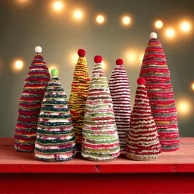 Here we are in the season of giving generously. Not all of us can afford to give lavishly, but even the humble gift of seeds can create enormous abundance. We’re talking about both literal and figurative seeds here.
Here we are in the season of giving generously. Not all of us can afford to give lavishly, but even the humble gift of seeds can create enormous abundance. We’re talking about both literal and figurative seeds here. The more challenging life becomes, the more I remind myself of what’s good and beautiful and wondrous and nourishing in life, what I can be deeply grateful for and what I will stick my neck out to protect. The list is long!
The more challenging life becomes, the more I remind myself of what’s good and beautiful and wondrous and nourishing in life, what I can be deeply grateful for and what I will stick my neck out to protect. The list is long! Eve’s “Embarrassment of Riches” Garage Sale Is Delayed
Eve’s “Embarrassment of Riches” Garage Sale Is Delayed
 At this time of year, many of you probably share with me the bittersweet feeling of closure drawing near. It’s been another immensely rewarding growing season at Harlequin’s, and we are so grateful to have had the opportunity to introduce hundreds of new Colorado gardeners to appropriate and successful materials and methods, as well as helping so many longtime, like-minded sustainable gardeners. For 32 years we have been providing pollinator-safe Colorado-appropriate plants, products, information and advice based on our ongoing research and long experience, and we look forward to carrying this service well into the future. Thank you all for your support! But we’ve extended our season and we’re not done yet!
At this time of year, many of you probably share with me the bittersweet feeling of closure drawing near. It’s been another immensely rewarding growing season at Harlequin’s, and we are so grateful to have had the opportunity to introduce hundreds of new Colorado gardeners to appropriate and successful materials and methods, as well as helping so many longtime, like-minded sustainable gardeners. For 32 years we have been providing pollinator-safe Colorado-appropriate plants, products, information and advice based on our ongoing research and long experience, and we look forward to carrying this service well into the future. Thank you all for your support! But we’ve extended our season and we’re not done yet! 
 I have a passion for seeds, for the elegant and endlessly diverse designs of their natural packaging, their fascinating distribution and germination strategies, and for the astonishing emergence of exuberant life from even the most minute speck of a seed. I once grew a Eucalyptus gunnii tree from seed the size of a dust mote. It grew, outdoors (in Eugene, Oregon) for several years, reaching 16’ tall until an unusually heavy snowstorm broke all the branches off. And in its native Tasmania it could have reached 135 feet! In addition to collecting seeds from plants in the wild and in my pollinator garden at home, I collect seeds at this time of year from my vegetable garden to enable Harlequin’s Gardens to offer unique and commercially unavailable varieties of tomatoes (“Anasazi”) and peppers (Lanterna Piccante), wild perennial arugula, and perennial Caucasian Spinach vine.
I have a passion for seeds, for the elegant and endlessly diverse designs of their natural packaging, their fascinating distribution and germination strategies, and for the astonishing emergence of exuberant life from even the most minute speck of a seed. I once grew a Eucalyptus gunnii tree from seed the size of a dust mote. It grew, outdoors (in Eugene, Oregon) for several years, reaching 16’ tall until an unusually heavy snowstorm broke all the branches off. And in its native Tasmania it could have reached 135 feet! In addition to collecting seeds from plants in the wild and in my pollinator garden at home, I collect seeds at this time of year from my vegetable garden to enable Harlequin’s Gardens to offer unique and commercially unavailable varieties of tomatoes (“Anasazi”) and peppers (Lanterna Piccante), wild perennial arugula, and perennial Caucasian Spinach vine.

 Sometimes we are running so fast that we forget to slow down and see what’s ready to come out for sale. This week we are happily surprised to see that we have fresh stock of lots of premium native shrubs that we grew in convenient, affordable 2-gallon pots. We’re making them available at regular price (not discounted for our fall sale) – read more below.
Sometimes we are running so fast that we forget to slow down and see what’s ready to come out for sale. This week we are happily surprised to see that we have fresh stock of lots of premium native shrubs that we grew in convenient, affordable 2-gallon pots. We’re making them available at regular price (not discounted for our fall sale) – read more below. We still have Lavender (Munstead, Buena Vista, Hidcote and Grosso), and if you want to plant them this season, get them this week on sale for 20% off! Any plants left after that will be potted up for next year. Because it is evergreen, newly planted lavender is more sensitive to hard frost than many other hardy perennials, so to give them a chance to establish before very cold weather arrives, plant them NOW. If you garden at an elevation higher than 6,000’, we recommend waiting to plant lavender next spring.
We still have Lavender (Munstead, Buena Vista, Hidcote and Grosso), and if you want to plant them this season, get them this week on sale for 20% off! Any plants left after that will be potted up for next year. Because it is evergreen, newly planted lavender is more sensitive to hard frost than many other hardy perennials, so to give them a chance to establish before very cold weather arrives, plant them NOW. If you garden at an elevation higher than 6,000’, we recommend waiting to plant lavender next spring.